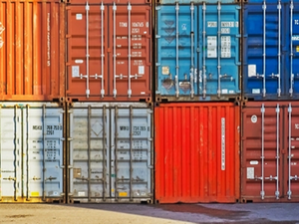India set to redefine global trade at 6.4 pc CAGR over next decade: Report
3 min read
India is poised to redefine its role in global trade, with a projected compound annual growth rate (CAGR) of 6.4 per cent in trade over the next decade, roughly in line with its high GDP growth, according to a report on Monday.
The ASEAN region and especially India, are among the greatest beneficiaries of production shifts spurred by geopolitics, such as trade tensions between the US and China.
“We project 6.4 per cent CAGR in India’s total trade through 2033, to $1.8 trillion annually, roughly in line with its high GDP growth,” according to the report by Boston Consulting Group (BCG).
As the world increasingly pivots toward resilient and diversified supply chains, India’s ‘China+1’ strategy, backed by its large domestic market, skilled workforce, and forward-looking policies, positions it as a preferred global manufacturing hub.
“Strengthening partnerships with the US, EU, and emerging regions like Africa and ASEAN will be pivotal for India to capitalise on this momentum and drive inclusive, sustainable growth in global trade,” said Nishant Gupta, Managing Director Partner, BCG India.

India is emerging as the other big Global South trade story as it pursues favourable relations with most of the world’s major economies.
Among the drivers will be India’s growing popularity as a production base for companies seeking to diversify supply chains concentrated in China, hefty government incentives for manufacturing, a huge low-cost workforce, and rapidly improving infrastructure, said the report.
The analysis by BCG’s Center for Geopolitics estimates that global trade is set to top $29 trillion by 2033, but the routes these goods will travel is changing at a remarkable pace. The Global South, which accounts for around 30 per cent of global trade, is likely to see several major shifts over the coming decade.
Geopolitical rivalries, alliances, and aspirations are rewiring the global economy — and will continue to do so in the years ahead, accelerated by the imposition of tariffs by the US on foreign imports, the report mentioned.
Without a broad increase in tariffs, world trade in goods will keep growing at an average of 2.9 per cent annually for the next eight years, but the routes goods travel will change markedly as North America reduces its dependence on China and China builds up its links with the Global South, which is cementing its power in the global trade map.
“Trade lanes were already shifting from historical patterns and looming US tariffs will accelerate this. Navigating these new dynamics will be critical for any global business,” said Aparna Bharadwaj, managing director and partner at BCG, global leader of the Global Advantage practice.
In terms of product categories imported by the US, the greatest impact would be on imported auto parts and automotive vehicles, which would primarily affect trade with Mexico, the EU, and Japan.
Consumer electronics, electrical machinery, and fashion goods would be most affected by higher tariffs on Chinese goods.
“We estimate that a 60 per cent tariff rate would add $61 billion to cost of importing consumer electronics products from China into the US,” said the report.
(With inputs from IANS)